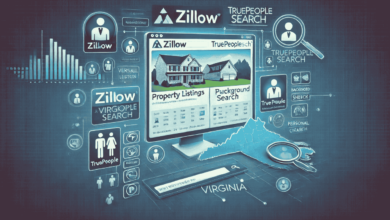Say Goodbye to Tripping Hazards Forever

Tripping hazards may seem like minor inconveniences, but they can have significant consequences for homeowners. From loose carpets to cluttered walkways, these hidden dangers are a leading cause of injuries in the home.
In this blog post, we’ll explore why tripping hazards should be a top concern, how to identify them, and practical tips to eliminate these risks. Read on to learn how you can make your home safer for everyone.
The Hidden Dangers Lurking in Your Home
Homeowners often overlook tripping hazards, but these seemingly minor issues can lead to severe injuries. Understanding why they are so dangerous is the first step in preventing accidents.
Why Tripping Hazards Matter
Tripping hazards are common in many homes, but their potential impact is often underestimated. These hazards can cause falls, which are especially dangerous for seniors and children. Falls can result in broken bones, concussions, and other serious injuries that may require medical attention.
The Financial Impact of Tripping Hazards
The costs associated with accidents caused by tripping hazards can be significant. Medical bills, home modifications, and lost work time add up quickly. By addressing tripping hazards, homeowners can avoid these expenses and ensure a safer living environment.
Peace of Mind for Homeowners
Eliminating tripping hazards provides peace of mind. Knowing that your home is safe for everyone, including elderly family members and young children, is invaluable. It’s a proactive step that shows you care about the well-being of your loved ones.
Identifying Common Tripping Hazards
The first step to making your home safer is identifying potential tripping hazards. While some are obvious, others might be less noticeable but equally dangerous.
Loose Carpets and Rugs
Loose carpets and rugs are a major tripping hazard. They can easily catch a foot and cause a fall. Ensure that all rugs and carpets are securely fastened to the floor. Consider using non-slip pads or double-sided tape to keep them in place.
Cluttered Walkways
Clutter in walkways is another common tripping hazard. Toys, shoes, and other items left on the floor can obstruct paths and lead to trips and falls. Make it a habit to keep walkways clear and organized.
Electrical Cords and Cables
Electrical cords and cables that run across floors are easy to trip over. Use cord covers or route them along the walls to minimize the risk. Additionally, ensure that cords are not frayed or damaged as this can increase the danger.
Impact on Safety and Well-being
Understanding the risks and consequences of tripping hazards will further emphasize the importance of addressing them.
Risks for Seniors
Seniors are particularly vulnerable to falls caused by tripping hazards. Their reduced mobility and balance issues make it more difficult for them to recover from a trip. A fall can lead to serious injuries such as hip fractures, which are often life-threatening for older adults.
Dangers for Children
Children are also at high risk of tripping hazards. Their active nature and lack of awareness make them more likely to trip over objects left on the floor. Falls can result in cuts, bruises, and more severe injuries that may require medical intervention.
General Well-being
Beyond physical injuries, tripping hazards can impact overall well-being. Constantly navigating around hazards can cause stress and anxiety, affecting mental health. Ensuring a hazard-free home promotes a more relaxed and comfortable living environment.
Solutions and Precautionary Measures
Taking proactive steps to eliminate tripping hazards can significantly improve home safety. Here are some practical tips to get you started.
Secure Loose Carpets
Use non-slip pads or double-sided tape to secure loose carpets and rugs. Alternatively, consider removing them altogether if they pose a significant risk. Regularly check their condition to ensure they remain safely in place.
Declutter Regularly
Make decluttering a regular part of your routine. Encourage family members to put away their belongings, especially in high-traffic areas. Use storage solutions like baskets and shelves to keep items off the floor.
Manage Cords and Cables
Use cord covers to manage electrical cords and cables. Secure them along walls or under furniture to keep them out of walkways. This not only reduces the risk of tripping but also keeps your home looking tidy.
Technology and Innovation in Home Safety
Modern technology offers innovative solutions to help reduce or eliminate tripping hazards. These gadgets can make your home safer and more convenient.
Smart Lighting
Smart lighting systems can help illuminate dark areas in your home, reducing the risk of trips and falls. Motion-activated lights are particularly useful in hallways and staircases.
Home Automation
Home automation systems can help manage clutter and hazards. For instance, robotic vacuum cleaners can reduce the need for manual cleaning, helping to keep floors clear of obstacles.
Concrete Lifting
For outdoor spaces, uneven concrete can be a significant tripping hazard. Hiring professionals who offer concrete lifting services in Layton or wherever you are located, is an effective solution to level uneven surfaces, making walkways safer. This simple yet powerful technique can prevent trips and falls in your yard or driveway. Polyurethane concrete lifting is one of the most efficient methods available for addressing uneven surfaces. This technique involves injecting polyurethane foam beneath the concrete to lift and stabilize it, which can effectively eliminate tripping hazards and extend the lifespan of your concrete surfaces.
Conclusion
Tripping hazards are more than just minor inconveniences; they pose serious risks to safety and well-being. By taking proactive steps to identify and eliminate these hazards, homeowners can create a safer living environment for everyone. From securing loose carpets to managing cords and cables, there are many practical solutions available. Modern technology, like smart lighting and concrete lifting, offers innovative ways to enhance home safety.
Don’t wait until an accident happens. Start making your home safer today by addressing these hidden dangers.




